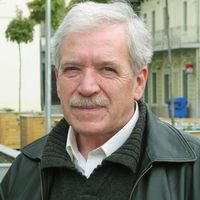Péter Tóth
Miskolc University, Medieval History, Faculty Member
Il 22 ottobre del 1762 è sicuramente una delle date più importanti della storia scientifica dell'Ungheria, perché in quel giorno la fondazione dell'accademia mineraria di SelmecbAnya venne confermata dall'imperatrice Maria Teresa. Le... more
Il 22 ottobre del 1762 è sicuramente una delle date più importanti della storia scientifica dell'Ungheria, perché in quel giorno la fondazione dell'accademia mineraria di SelmecbAnya venne confermata dall'imperatrice Maria Teresa. Le finalità di questo istituto, nato per la riorganizzazione della "Berg-Schola", fondata nel 1735, prevedevano la preparazione ad alto livello degli studenti in tutti quei campi delle scienze che in qualche modo erano legati all'industria estrattivo-siderurgica, all'epoca detta "montanistica"!. Il governo assicurò le condizioni per la realizzazione di tali finalità e, grazie a questo, a SelmecbAnya insegnavano professori di fama europea, o che l'acquistarono proprio all'Accademia. Possiamo dire, quindi, che in conseguenza della formazione scientifica a livello alto e della politica scientifica dell'Impero, nella seconda metà del secolo XVIII, Selmecbanya era uno dei centri europei della ricerca scientifica, ed 1 professori e i ricercatori dell' Accademia avevano un ruolo decisivo nel proprio campo scientifico. Uno di questi scienzati era Giovanni Antonio Scopoli, nato il 13 giugno del 1723? nella città di Cavalese nel Tirolo. Sua madre fu Claudia Catharina Gramola, proveniente da una famiglia nobile trentina, suo padre Francesco Antonio Scopoli, luogotenente e commissario militare del principe imperiale e del vescovo di Trento. La genealogia della famiglia degli Scopoli è stata pubblicata allegata alle lettere a lui dirette da Linneo*, e ne salta fuori che l'origine della famiglia, in base alle date degli archivi, risale agli anni intorno al 1400 e che gli antenati erano soprattutto funzionari pubblici, mentre il bisnonno di Scopoli si trasferì a Cavalese nel 1574. Scopoli iniziò gli studi nella sua città di nascita, li continuò a Trento e li finì nel liceo di Hall am Inn. Egli aveva un'opinione molto cattiva su questa ultima scuola, raccontando nella sua autobiografia che, dopo aver scoperto di non poter studiare nulla sulla base di chiacchere vane, fu costretto ad acquisire le basi delle scienze in modo autodidattico. Dopo questi studi si mise a occuparsi di medicina all'università di Innsbruck. Tra i suoi professori troviamo Baccheton, Peyer e Gesner, ma anche durante gli anni universitari preferiva
